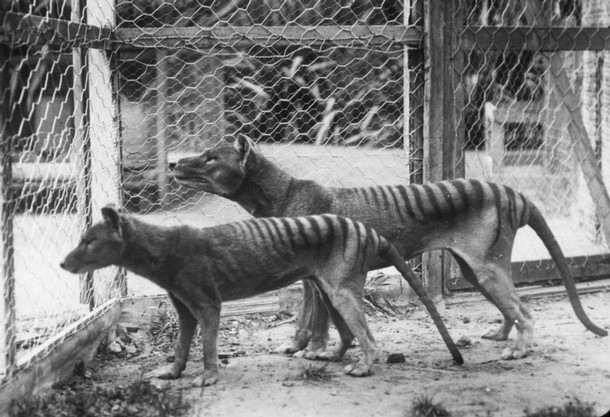|
Beaumaris Zoo
The Hobart Zoo (also known as Beaumaris Zoo) was an old-fashioned zoological garden located on the Queen's Domain in Hobart, Tasmania, Australia. The Zoo site is very close to the site of the Tasmanian Governor's House, and the Botanical Gardens. Although its location is now primarily the site of a Hobart City Council depot, some remnants and archaeological remains of the original Zoo can still be seen. The Zoo was set in the surrounds of sweeping gardens, and had commanding views across the River Derwent. Thylacines The Hobart Zoo is most famous for being the location where footage of the last known living Tasmanian tiger or thylacine was taken in 1936. It died in captivity in Hobart Zoo on 7 September 1936. National Threatened Species Day has been held annually since 1996 on 7 September in Australia, to commemorate the death of the last officially recorded thylacine. History The zoo was originally called Beaumaris Zoo, and was opened in 1895 at the private residence ... [...More Info...] [...Related Items...] OR: [Wikipedia] [Google] [Baidu] |
Hobart
Hobart ( ; Nuennonne/Palawa kani: ''nipaluna'') is the capital and most populous city of the Australian island state of Tasmania. Home to almost half of all Tasmanians, it is the least-populated Australian state capital city, and second-smallest if territories are taken into account, before Darwin, Northern Territory. Hobart is located in Tasmania's south-east on the estuary of the River Derwent, making it the most southern of Australia's capital cities. Its skyline is dominated by the kunanyi/Mount Wellington, and its harbour forms the second-deepest natural port in the world, with much of the city's waterfront consisting of reclaimed land. The metropolitan area is often referred to as Greater Hobart, to differentiate it from the City of Hobart, one of the five local government areas that cover the city. It has a mild maritime climate. The city lies on country which was known by the local Mouheneener people as nipaluna, a name which includes surrounding features such as ... [...More Info...] [...Related Items...] OR: [Wikipedia] [Google] [Baidu] |
